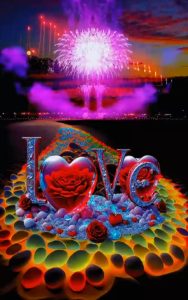California has long been known as one of the most progressive, tolerant and LGBTQ+-friendly states in the US. Los Angeles was home to the US’ first gay rights organisation and coined the term “Pride” to refer to gay advocacy. San Francisco hosted the country’s first gay rights march and elected the first openly gay man to public office. The state was the first to legalise domestic partnerships between same-sex couples and consistently ranks as the best place in the US for LGBTQ+ travellers to visit.
In 2017, California issued a travel ban prohibiting state-funded travel to any state “that discriminates on the basis of sexual orientation, gender identity, or gender expression”. The travel ban initially applied to just five states, but after a wave of anti-LGBTQ+ legislation has swept across the US in the past seven years, it currently covers nearly half of the country.
Now, in an effort to advance some of its other progressive policy goals, California is considering ending its travel ban and replacing it with an advertising campaign to promote acceptance and inclusion of LGBTQ+ people in these “banned” states. The move is the latest effort in California’s long history of promoting acceptance and inclusion for the gay community.

California has long been at the forefront of the US’ gay rights movement (Credit: Charles O. Cecil/Alamy)
But while places like San Francisco and Los Angeles have famously helped establish California as an LGBTQ+ bastion, the state is home to another gay hub that is often overshadowed by these other cities: San Diego.
San Diego has been a haven for members of the LGBTQ+ communities for decades. In his book Coming Out Under Fire: The History of Gay Men and Women in World War II, historian Allan Bérubé explained that the city’s role as a major military headquarters inadvertently created a nascent gay scene during the war. Gay and lesbian people who had been isolated in smaller towns across the country where homosexuality was frowned upon were suddenly brought together during the war effort.
Gay bars like Bradley’s and Blue Jacket in San Diego’s Gaslamp District attracted so many people that the city was featured in the 1952 book USA Confidential about America’s “sin spots”, while clubs like the Seven Seas and Jack’s Steam acted as a cruising ground for gay men. Many military veterans later chose to settle in the city and, thanks to the city’s culture of tolerance, 135 gay bars have opened here since the the war ended in 1945.
“Moving out here, I fell in love with San Diego,” said Chris Orban, more commonly known as Ariana Grindr on TikTok. “I feel like I can be my true self here.”

Hillcrest is affectionately known as San Diego’s “gayborhood” (Credit: Danita Delimont/Alamy)
Nowadays, the hub of the city’s LGBTQ+ community is Hillcrest, where a rainbow-lit sign and rainbow flags flapping over indie book shops, cafes and vintage clothing shops remind visitors why the area is dubbed San Diego’s “gayborhood”. Thanks to a mixture of cheap rent, abundant space and its out-of-the-way location, Hillcrest’s gay community began congregating here in the late 1960s. The city’s first Gay Pride parade was held here in 1975 and today the annual event is one of the largest Prides in the US, attracting more than 300,000 people.
One of Hillcrest’s most popular hangouts is Gossip Grill, which is one of only 27 lesbian bars left in the country. “We’re a safe space for women and the marginalised community. It’s the only women’s bar in Southern California,” said owner Moe Girton. “One thing we’ve seen recently, there’s so much more diversity now and fluidity and people just stepping into their skin. You don’t have to fit into a box anymore. Everyone [here] is just who they are and so accepting of everyone.”
Down the road and across a rainbow-painted crosswalk, you’ll find the Hillcrest Brewing Company, the world’s first gay brewery. When the sun dips down behind the horizon, you can follow the music along University Avenue to dance the night away at Rich’s, Hillcrest’s most popular gay nightclub, which has been featured on shows like the Real Housewives of Beverly Hills.
Any visit to San Diego wouldn’t be complete with a visit to the beach. But before hitting the surf, stock up on sweets from the Candy Pushers, a colourful, lesbian-owned candy shop serving homemade fudge, specialty chocolates and truffles alongside more than 1,000 varieties of sweets. Then, a few shops away, stop by HUMANITY!, a novelty shop where you can find the perfect pair of Speedos, though those preferring to swim in their birthday suit should hit Black’s Beach, a clothing-optional beach that’s a popular hangout for the gay community.
One of the city’s most iconic and historic hotels is The Lafayette Hotel, Swim Club & Bungalows, located in North Park. It also happens to be a hotspot for local gay men to enjoy a poolside drink. The hotel will reopen in June 2023 after a $26m renovation, and is just one of many LGBTQ+-friendly hotels in the city.

Black’s Beach is a popular hangout for San Diego’s gay community (Credit: Roy Johnson/Alamy)
San Diego may not be the first city people think of in California when they think of tolerance, but with its mix of year-round warm weather and climate of acceptance, there’s nowhere Orban would rather be.
“I feel at home [here]. Everyone is so open minded here and I can just be my authentic self without worrying. I don’t live in the fear of walking down the street and getting assaulted because I dress the way I dress or have long hair,” he said. “Plus, it’s gorgeous and I’m obsessed with the beaches and the weather here. Every day is a vacation.”





